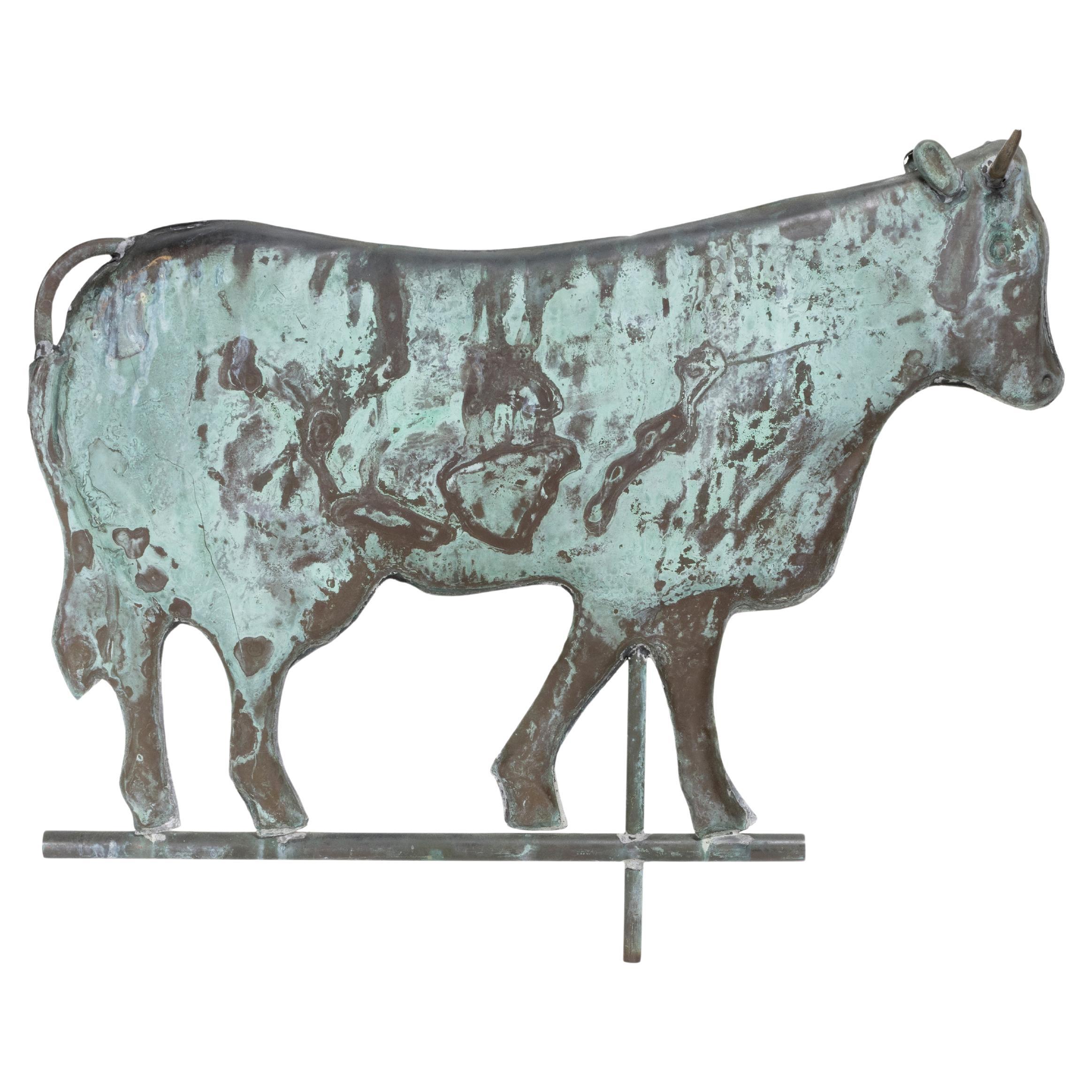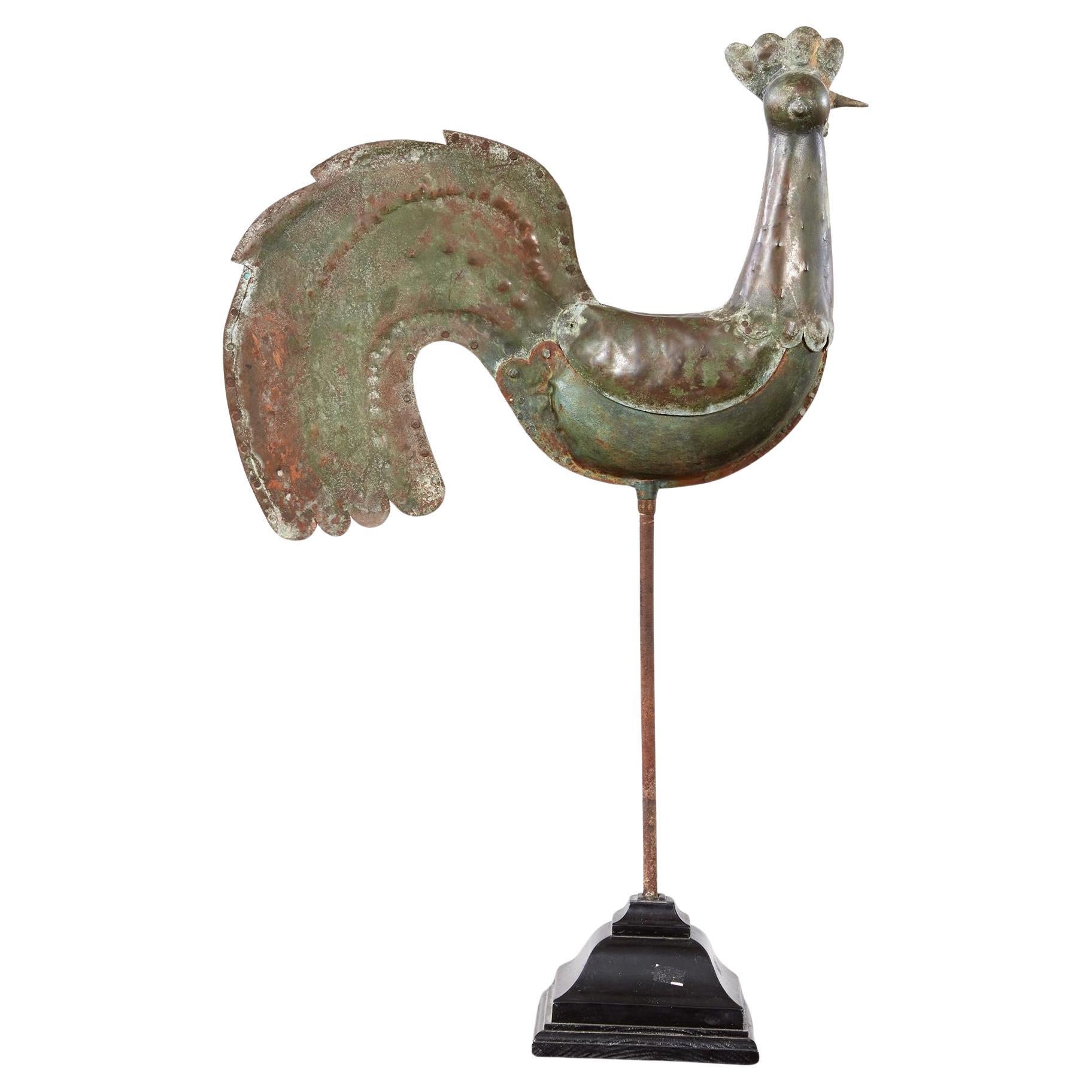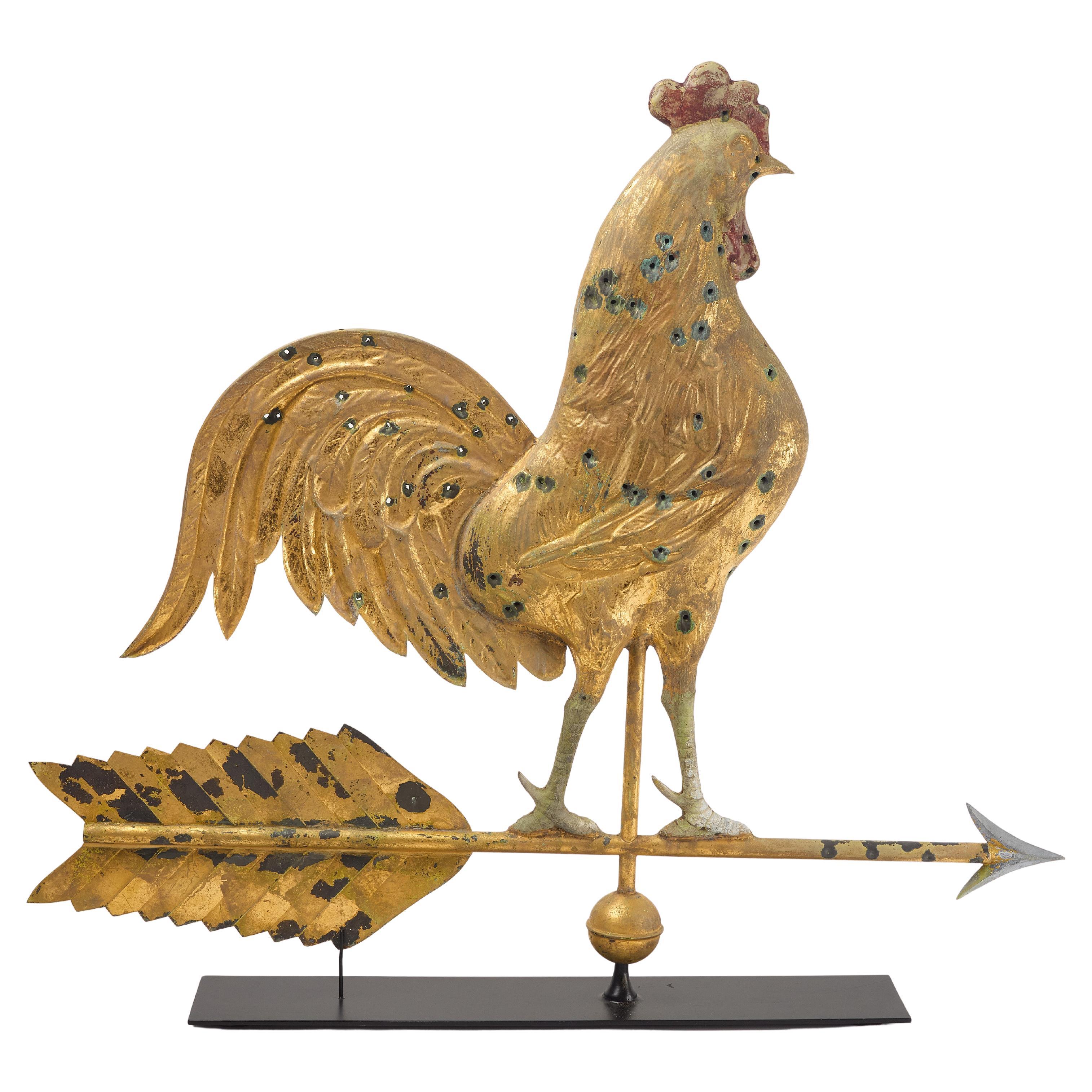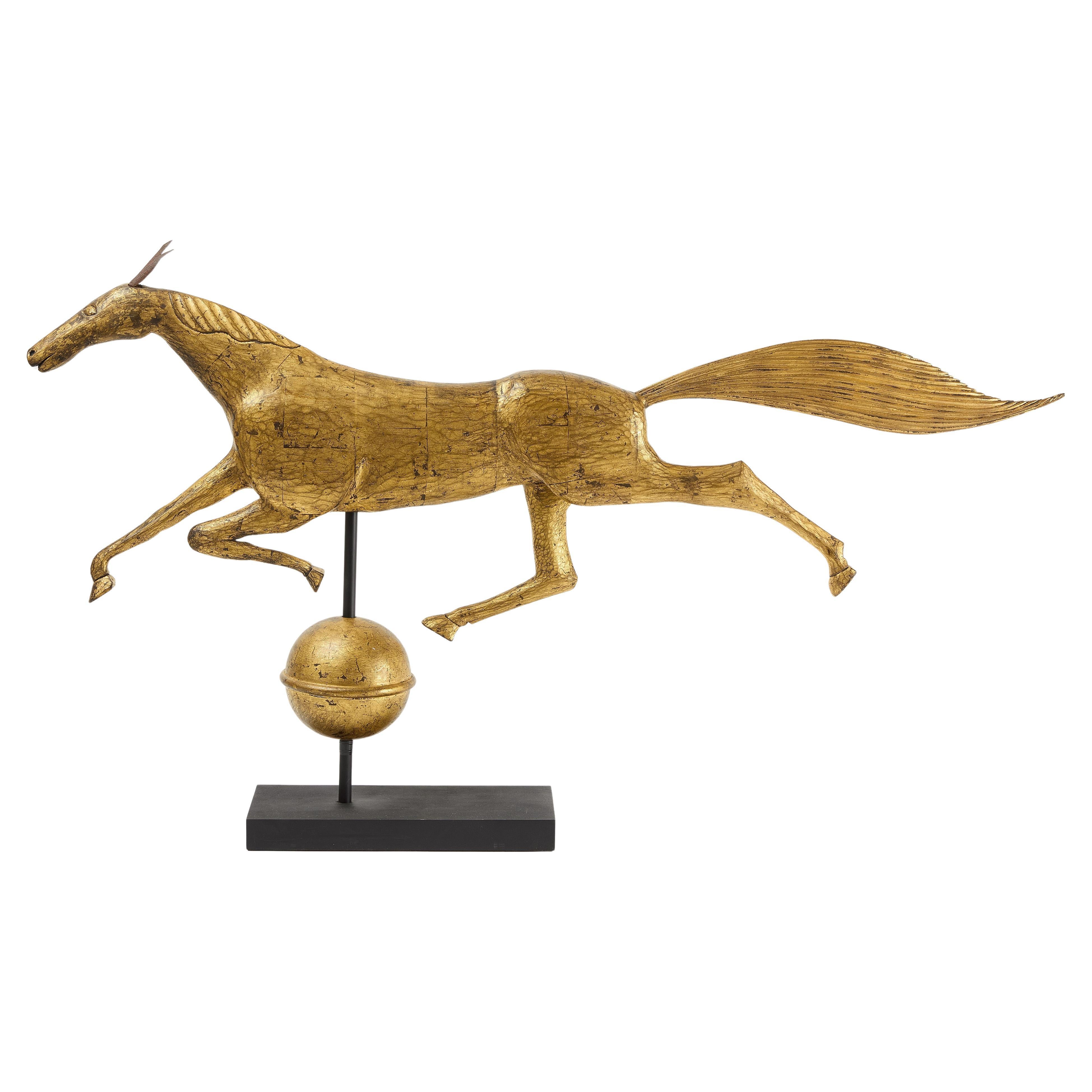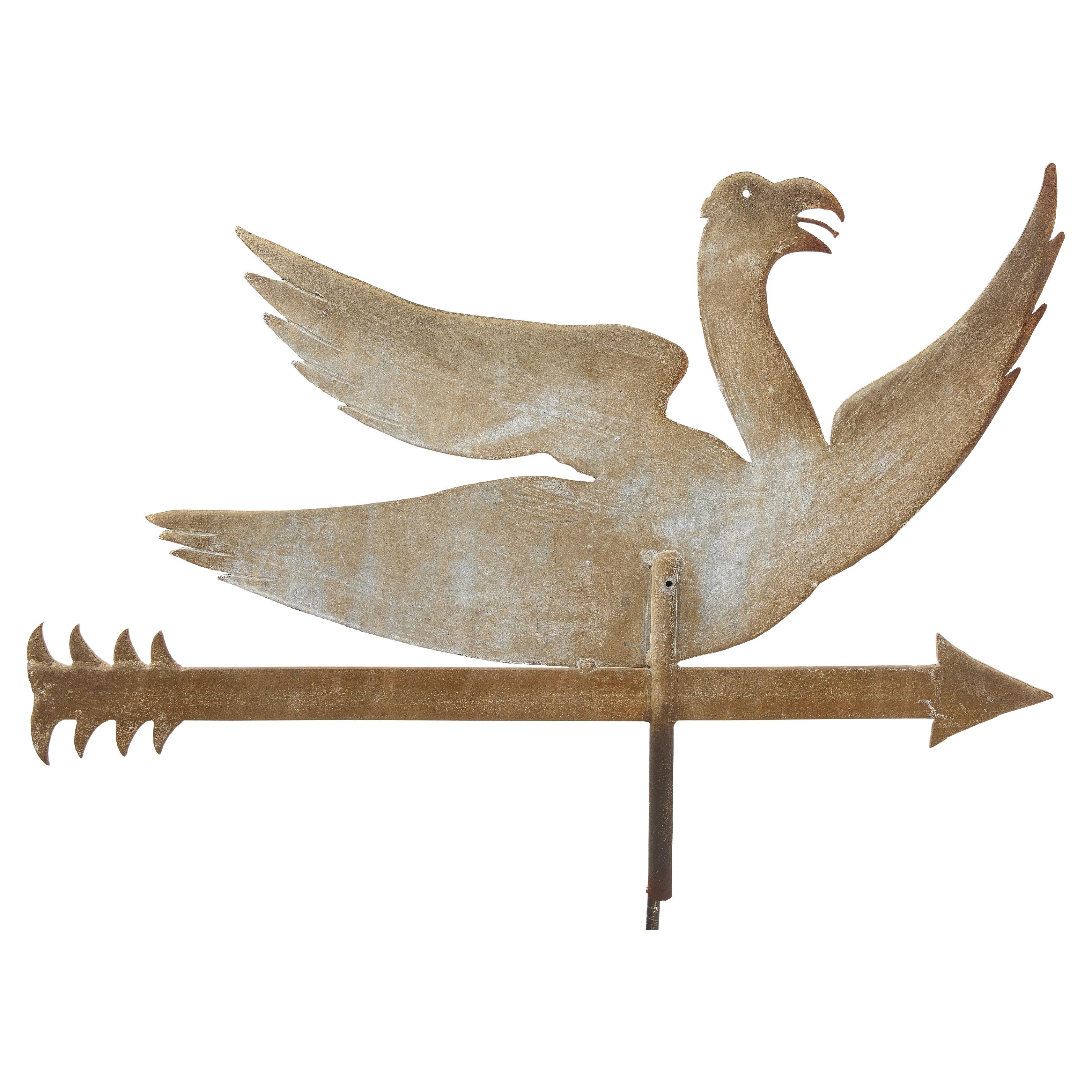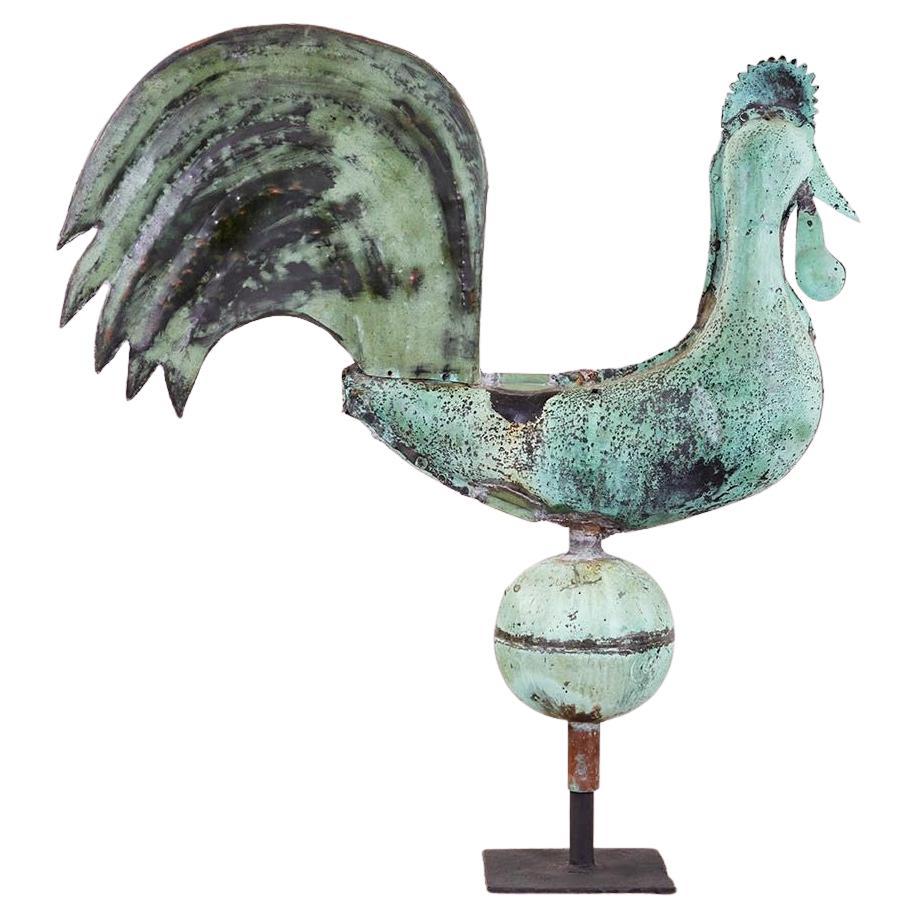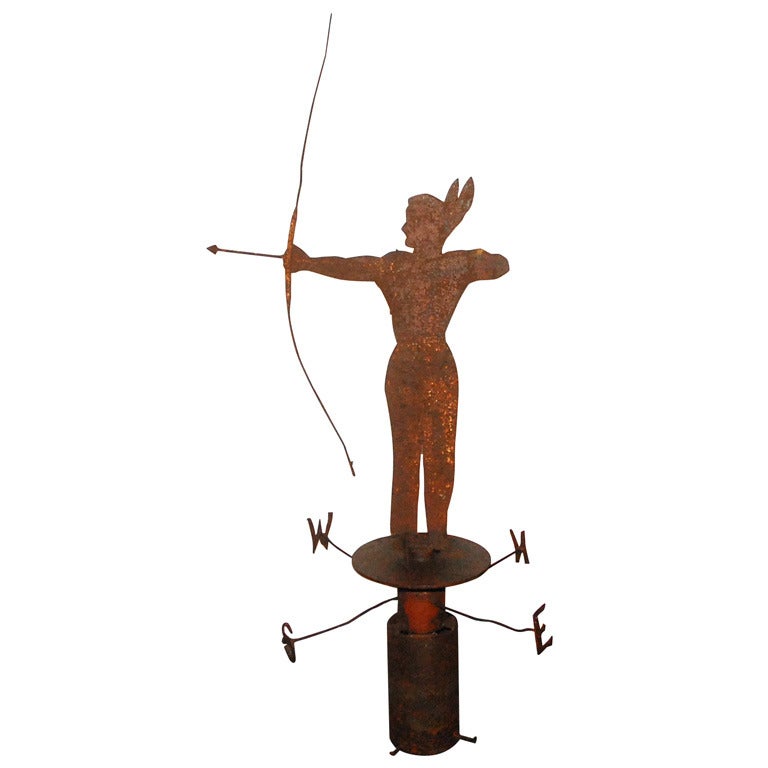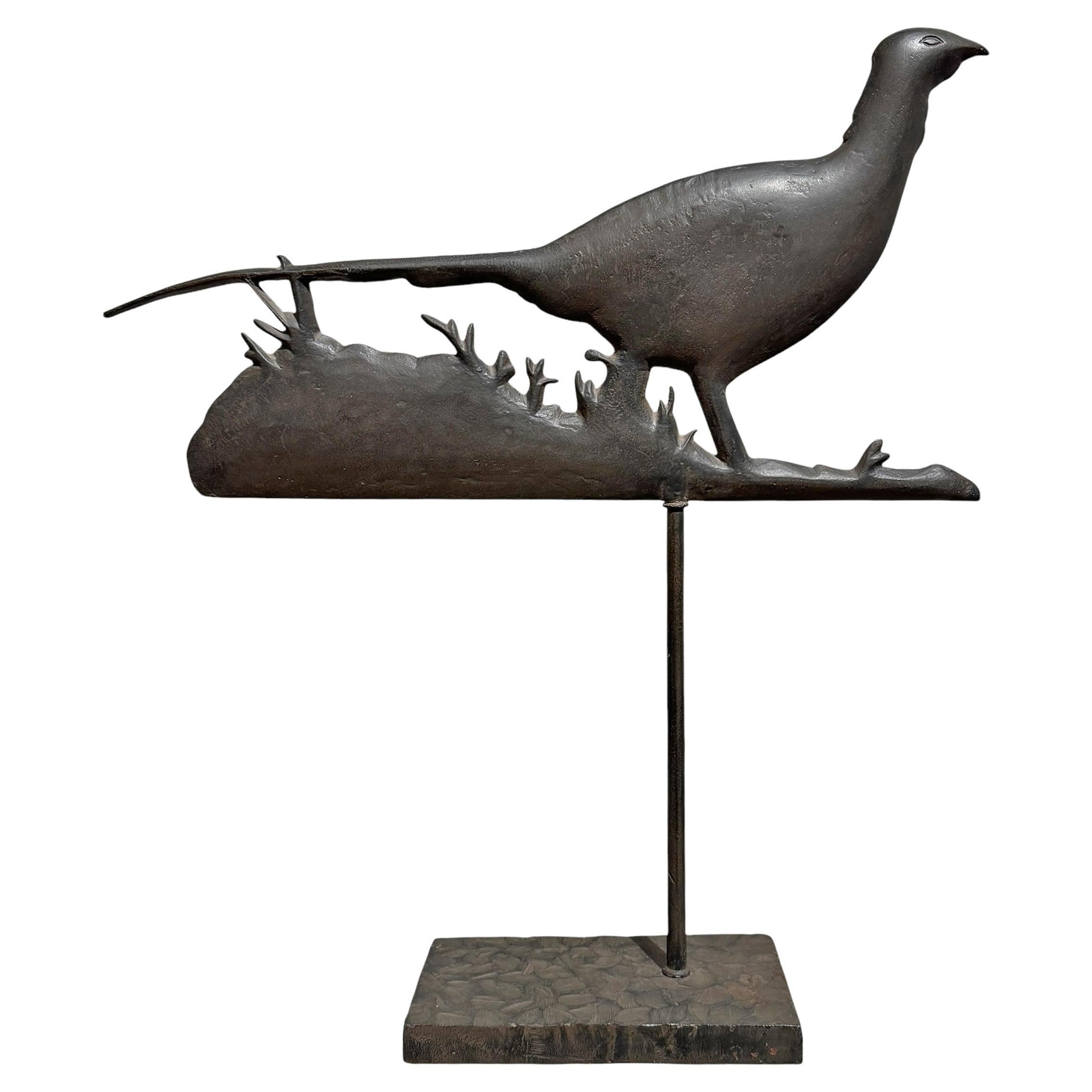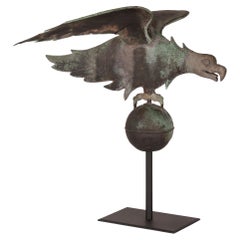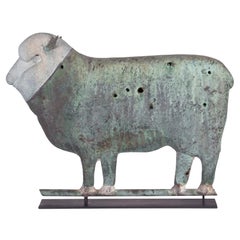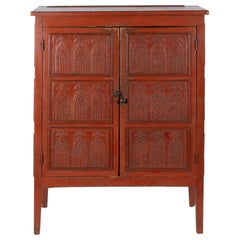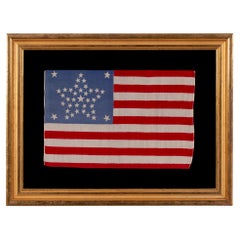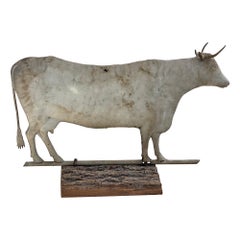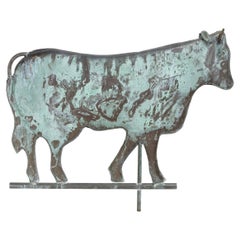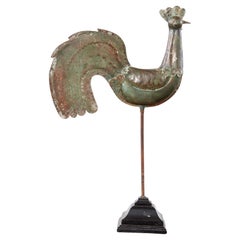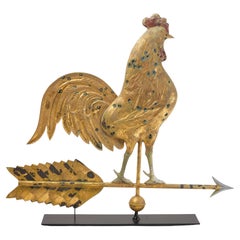
Cow Weathervane, Excellent Scale, Great Boxy Form, with Gilded Surface
View Similar Items
Want more images or videos?
Request additional images or videos from the seller
1 of 6
Cow Weathervane, Excellent Scale, Great Boxy Form, with Gilded Surface
Price:$15,000
$22,500List Price
About the Item
- Dimensions:Height: 21.5 in (54.61 cm)Width: 32 in (81.28 cm)Depth: 6.5 in (16.51 cm)
- Materials and Techniques:
- Place of Origin:
- Period:
- Date of Manufacture:1880
- Condition:Wear consistent with age and use. See Item Description.
- Seller Location:York County, PA
- Reference Number:Seller: wv-0471stDibs: LU84979768751
About the Seller
5.0
Recognized Seller
These prestigious sellers are industry leaders and represent the highest echelon for item quality and design.
Established in 1991
1stDibs seller since 2008
70 sales on 1stDibs
Typical response time: 1 to 2 days
Authenticity Guarantee
In the unlikely event there’s an issue with an item’s authenticity, contact us within 1 year for a full refund. DetailsMoney-Back Guarantee
If your item is not as described, is damaged in transit, or does not arrive, contact us within 7 days for a full refund. Details24-Hour Cancellation
You have a 24-hour grace period in which to reconsider your purchase, with no questions asked.Vetted Professional Sellers
Our world-class sellers must adhere to strict standards for service and quality, maintaining the integrity of our listings.Price-Match Guarantee
If you find that a seller listed the same item for a lower price elsewhere, we’ll match it.Trusted Global Delivery
Our best-in-class carrier network provides specialized shipping options worldwide, including custom delivery.More From This Seller
View AllEagle Weathervane, ca 1852-1870, Waltham Massachusetts
Located in York County, PA
Eagle weathervane in a beautiful form with great folk presence, possibly made by A.L. JEWELL & CO. (1852-1867) or its predecessor, Cushing & White / ...
Category
Antique Late 19th Century Weathervanes
Materials
Metal
Merino Sheep Weathervane, Attributed to A.J Harris & Co, Boston, ca 1875
Located in York County, PA
MERINO SHEEP WEATHERVANE, THE VERY BEST OF ITS KIND AND WITH PERHAPS THE BEST SURFACE THAT EXISTS ON SURVIVING EXAMPLES, ATTRIBUTED TO A.J. HARRIS & CO., BOSTON, circa 1875
This fan...
Category
Antique 1870s American Weathervanes
Materials
Metal
Price Upon Request
Unusual Form Pie Safe with Lantern Style Tins
Located in York County, PA
Unusual form pie safe with lantern-style tins and striking, tomato red paint, circa 1840
Of all the pie safes that I have owned in thirty years of buy...
Category
Antique 1840s American Painted Furniture
Materials
Wood
38 Star American Parade Flags with Stars in a Great Star Pattern
Located in York County, PA
38 STAR AMERICAN PARADE FLAG WITH A RARE AND BEAUTIFUL VARIATION OF THE “GREAT STAR” OR “GREAT FLOWER” PATTERN, 4 LARGE CORNER STARS, & AN ODD OUTLIER, 1876-1889, COLORADO STATEHOOD,...
Category
Antique Late 19th Century American Political and Patriotic Memorabilia
Materials
Silk
Price Upon Request
Whimsical Hooked Rug with Pink Stripped Cow and Little White Dog, Ca 1910
Located in York County, PA
Whimsical Hooked rug with a pink striped cow and a little white dog, ca 1885-1910
Hooked rug with a pink striped cow, wearing a large cowbell, foll...
Category
Vintage 1910s American Rugs
Materials
Wool
33 Star Antique American Flag with a Great Star Configuration, ca 1859-1861
Located in York County, PA
33 STARS ANTIQUE AMERICAN FLAG WITH A "GREAT STAR" CONFIGURATION ON A BRILLIANT, INDIGO BLUE CANTON, A RARE AND EXTRAORDINARY EXAMPLE, PRE-CIVIL WAR THROUGH THE WAR'S OPENING YEAR, 1...
Category
Antique Late 19th Century American Political and Patriotic Memorabilia
Materials
Silk
You May Also Like
American Painted Copper Cow Weathervane by Cushing & White
By Cushing and White
Located in Southampton, NY
American Painted Copper Cow Weathervane by Cushing & White. A off-white painted, full bodied, copper dairy cow on a wood stand. A wonderful unusual wea...
Category
Antique Late 19th Century American Weathervanes
Materials
Metal
3 Dimensional Cow Form Weather Vane
Located in Coeur d'Alene, ID
20th Century three dimensional copper cow form weather vane with excellent patina. 27" x21"
Period: 20th Century
Origin: US
Size: 27" x 21"
Family Owned & Operated
Cisco’s Gal...
Category
20th Century American Weathervanes
Materials
Copper
Folk Rooster Weathervane
Located in Greenwich, CT
A 19th century French full-bodied copper rooster weathervane with a charming, stylized form and wonderful naturally patinated verdigris surface. Now on a high quality four sided pyr...
Category
Antique 1880s French Folk Art Weathervanes
Materials
Copper
$4,500
Large rooster weathervane.
By J.W. Fiske & Company
Located in Branford, CT
Large rooster weathervane. Molded copper body with gilt surface. Cast zinc legs. Most likely by J.W. Fiske, New York City. Late 19th century. Display stand included.
Category
Antique 1890s North American Folk Art Weathervanes
Materials
Copper
Running Horse Weathervane
Located in Branford, CT
Remarkable contemporary running horse weathervane. Carved wood with gold leaf. On stand (included).
H 29-1/2" L 50".
Category
Late 20th Century Weathervanes
Materials
Wood
Stylized Bird Weathervane
Located in Branford, CT
Stylized weathervane. Weathered zinc and sheet iron. Circa 1900. L 30" H 20". Excellent original condition.
Category
Early 20th Century American Folk Art Weathervanes
Materials
Metal, Zinc

